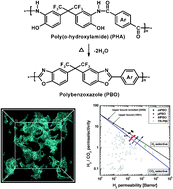Tuning microcavities in thermally rearranged polymer membranes for CO2 capture†
Abstract
Microporous materials have a great importance in catalysis, delivery, storage and separation in terms of their performance and efficiency. Most microporous materials are comprised of inorganic frameworks, while thermally rearranged (TR)


 Please wait while we load your content...
Please wait while we load your content...